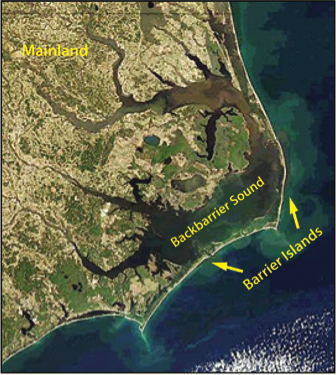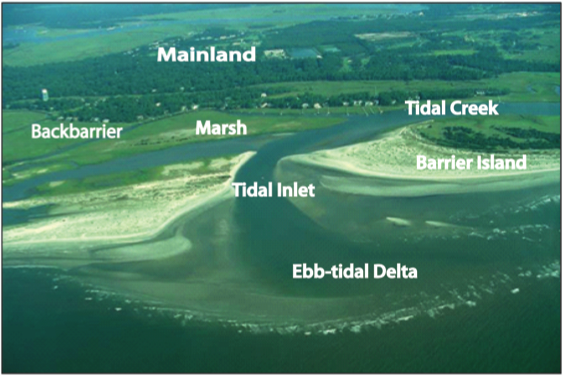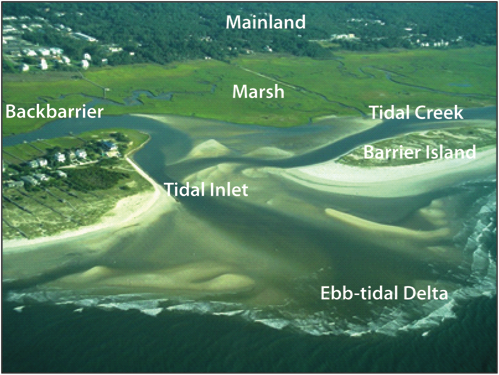Barrier Islands
How is a barrier island defined? What marine process is primarily responsible for the alignment of sand that is required to maintain a barrier island? How does hydrodynamic regime affect barrier morphology?
Barrier islands are shore-parallel elongated accumulations of sand that are constructed by waves and build vertically by the accumulation of sand from wind transport. They can be found along approximately 15% of the world’s existing coastlines, with the majority of them located along trailing edge or marginal sea coasts with wide, low gradient continental shelves. In some locations, they are isolated and separated from the mainland by either open bodies of water or marsh and tidal creek systems, depending upon the hydrodynamic regime of the area. However, in some locations, they can be attached to the mainland at one end (barrier spit) or at both ends (welded barrier). The length of barrier islands can range from just a few kilometers to as much as 100 km, and they can be as much as several kilometers wide.


Primary Morphological Components
The primary components of a barrier island system include the following
- Nearshore, beach and dune systems: these environments share the same characteristics as those that were discussed in the section for beaches.
- Backbarrier: the area located between the barrier and mainland and can consist of bodies of water such as bays, lagoons, and sounds, as well as marshes, tidal creeks, and tidal flats.
- Bays and Lagoons: shallow open to partially restricted water areas located in the backbarrier.
- Marshes: salt-tolerant vegetated areas within the intertidal area of the backbarrier.
- Tidal Flats- flat, sandy to muddy areas that are exposed at mid to low tide along the backbarrier.
- Tidal creek: a backbarrier creek through which water flows during flood and ebb tide.
- Tidal Inlets: openings along a shore-parallel chain of barrier islands through which water is exchanged between the open ocean and the backbarrier environments during a tidal cycle.
- Tidal Deltas: sandy to silt rich shoals that rise above the adjacent seafloor and are located on the landward and seaward side of tidal inlets.


